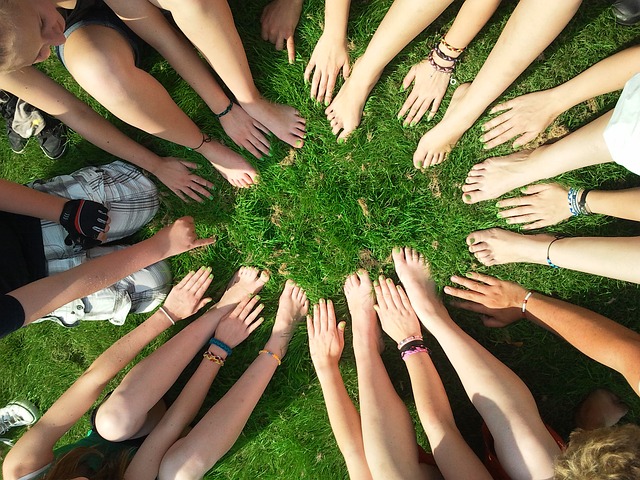In previous posts I highlighted the relationship between depression and being disconnected from what is meaningful in terms of work and in terms of relationships with other people. In this post, I want to draw further on the work of Johann Hari’s book, Lost Connections, by focusing on the loss of connection to meaningful values.
Being disconnected from meaningful values
In Chapter 8 of his book (pp. 91-105), Johann identifies a third social factor contributing to the rise of depression and anxiety – disconnection from meaningful values. In this section, he draws heavily on the ground-breaking research of Emeritus Professor Tim Kasser who explored in depth how our cultural values contribute to the rise of depression and anxiety in today’s Western society.
Tim was motivated in his search for meaningful values through the music of Bob Dylan and John Lennon and his own independent inquiry into the nature of authenticity while studying at Vanderbilt University, a learning institution committed to curiosity. Tim was curious about the reason why there was such an increase in the incidence of depression and anxiety in today’s world. He spent more than 25 years researching and working with colleagues to find the answers.
Tim drew on the work of philosophers and research by others
that established that the stronger a person focuses on materialistic values
(such as wanting more money and possessions and wanting to be viewed highly by
others), the more likely they are to experience depression. He conducted his own experiments as well and
learned that those who gave priority to materialistic values experienced less
joy and lived a poorer quality of life than those who primarily pursued
meaningful values. Johann describes Tim’s
research projects in detail in his book, Lost Connections.
Materialistic values pursue extrinsic rewards
Philosophers have identified two different types of human motivation
– extrinsic
and intrinsic. Extrinsic motivation
seeks an external reward in the form of money, status, recognition or being liked
and admired. Intrinsic motivation, in contrast, is associated with internal personal
rewards that flow from undertaking something for its own sake such as working
to make a difference in the world, developing meaningful and supportive
relationships, showing compassion towards someone in need or playing an
instrument for the sheer joy it brings. Materialistic
values focus on extrinsic rewards and do not add meaning to a person’s life.
Tim engaged 200 people in completing a “mood diary” over a period so that he could establish the outcomes for people who primarily pursued extrinsic goals versus those who pursued intrinsic goals. He was startled by the results – people who focused on, and achieved, extrinsic goals did not experience any appreciable increase in happiness in their daily life, despite the extraordinary amount of time and energy that they put into pursuing those extrinsic goals (e.g. gaining a promotion, purchasing a new car, buying the latest smart phone). In contrast, people who pursued, and achieved, their intrinsic goals were “significantly happier” and experienced a decline in depression and anxiety. These people set goals such as improving the way they related to others and supported those in need.
Johann points out that we all pursue both extrinsic and
intrinsic goals and the associated rewards.
However, the challenge is to achieve the right balance –
ensuring that materialistic values do not dominate our lives and lead to
depression and anxiety. We are
constantly confronted with the choice of whether we pursue an extrinsic goal or
an intrinsic one – such as whether we stay longer at work and earn more
overtime money or go home to our young family and enhance our relationships
with our partner and/or children.
I was recently confronted with such a choice – the choice between an extrinsic goal and an intrinsic one. I was asked to write a book on action learning and the extrinsic rewards offered were to earn money for the work, receive royalties on an ongoing basis and, in the process, make a name for myself by way of my “legacy”. The cost for me was to give up writing this blog on mindfulness, as the book would be all-consuming – I would have to give up what I consider to be making a real difference in some people’s lives (including my own) in favour of realising some extrinsic rewards. I chose to turn down the offer to write the book and to continue to research and write about ways to grow in mindfulness via this blog. The challenge for me was to put an important intrinsic goal ahead of offered extrinsic rewards.
We can become consumed by materialistic values and the
associated extrinsic rewards by spending more and more time and energy in their
pursuit, despite their achievement providing less and less satisfaction. People, for example, chase the next promotion
and movement up the ranks and are often prepared to sacrifice their personal
values and joy to “get there”.
Western society encourages and reinforces
materialistic values
Our consumer society cultivates extrinsic values and advertisers persistently encourage us to have the better car, to look better, to buy eye-catching jewellery, to upgrade our home (in terms of size and/or location) and to attract admiration. Porsche, for example, in promoting its latest SUV, the E-PACE, describes the new “luxury” vehicle as having “head-turning good looks” – reinforcing the “look-at-me” values of Western society.
The selfie revolution is another example of our pursuit of “looking good” on social media. Technologists have pandered to this trend by developing the “selfie drone” which has now morphed into the “dronie” that enables you to focus on your group and yourself and also to back away to highlight your location, thus providing that extra “WOW factor”. Some selfie drones even let you upload your shots directly to social media – meeting our need for immediacy and convenience. Taking selfies, by itself, does not mean you are pursuing materialistic values – some people use selfies solely for their family album or to share with family connections. The problem comes when taking selfies consumes us and their sole purpose is to establish our (superior) “value” in the eyes of other people.
Each year at Christmas time, there is a rush to have the
latest and best toys/games/technologies that are available – what was the
benchmark last year is now superseded by something more costly and peer
pressure reinforces the “need” for this purchase. Our children thus become indoctrinated very
early into the “must have’ social norms and lose sight of what really makes
them happy such as the sheer joy of playing a game with friends in the yard or
park.
Our culture drives the desire for extrinsic rewards to the
point where our elected officials feel it necessary to misuse their positions
of trust to increase their own wealth through corruption. More than fifty wealthy American parents were
recently charged with admissions
fraud through a scam designed to get their children admitted to “elite”
universities.
Johann points out that multiple studies show that depression and anxiety will be experienced by people who pursue materialistic goals relentlessly – irrespective of their age, social standing or economic means. He argues that just as junk food creates toxins in our bodies, “junk values” produce “psychological toxins” that invariably lead to depression and anxiety (p.97).
Becoming mindful about our lives and our values
Tim Kasser, in an interview in 2016,
encouraged us to reflect on how we spend our time and energy. He suggested that we look at what we really
value and how that is reflected in our life.
He asks us to seriously look at how we act out what we claim to be
important in our lives and how well we make time for the things that are
important to us.
As we grow in mindfulness through reflection, meditation and mindfulness practices, we can identify the ways in which our words and actions do not align with the values that provide meaning and happiness in our lives. We can explore ways to make better use of our time, not to pursue materialistic values, but to pursue intrinsic values that provide lasting satisfaction such as making a difference in the world, being fully in the present moment and connecting meaningfully with others.
____________________________________________
Image by KarinKarin from Pixabay
By Ron Passfield – Copyright (Creative Commons license, Attribution–Non Commercial–No Derivatives)
Disclosure: If you purchase a product through this site, I may earn a commission which will help to pay for the site, the associated Meetup group and the resources to support the blog.









